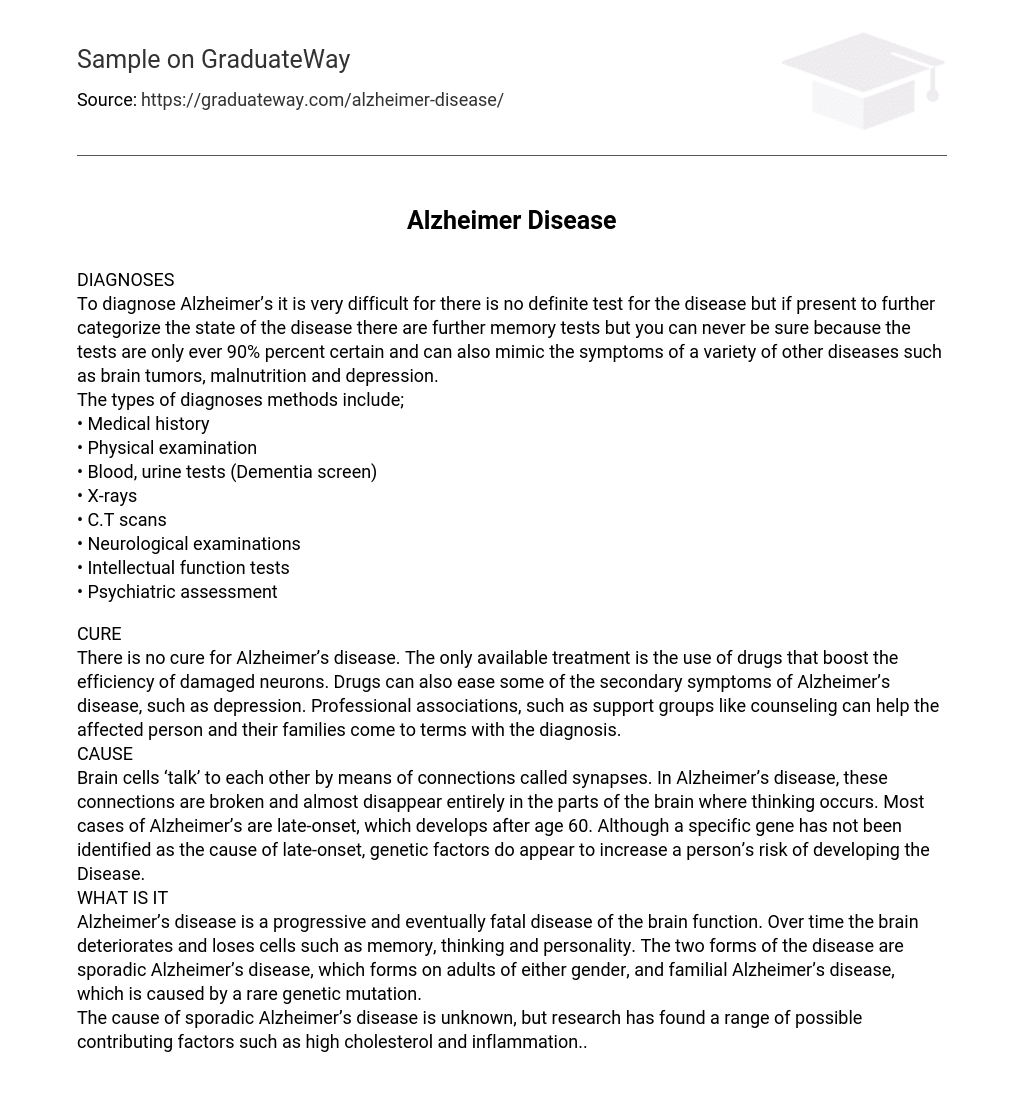DIAGNOSES
To diagnose Alzheimer’s it is very difficult for there is no definite test for the disease but if present to further categorize the state of the disease there are further memory tests but you can never be sure because the tests are only ever 90% percent certain and can also mimic the symptoms of a variety of other diseases such as brain tumors, malnutrition and depression.
The types of diagnoses methods include;
- Medical history
- Physical examination
- Blood, urine tests (Dementia screen)
- X-rays
- C.T scans
- Neurological examinations
- Intellectual function tests
- Psychiatric assessment
CURE
There is no cure for Alzheimer’s disease. The only available treatment is the use of drugs that boost the efficiency of damaged neurons. Drugs can also ease some of the secondary symptoms of Alzheimer’s disease, such as depression. Professional associations, such as support groups like counseling can help the affected person and their families come to terms with the diagnosis.
CAUSE
Brain cells ‘talk’ to each other by means of connections called synapses. In Alzheimer’s disease, these connections are broken and almost disappear entirely in the parts of the brain where thinking occurs. Most cases of Alzheimer’s are late-onset, which develops after age 60. Although a specific gene has not been identified as the cause of late-onset, genetic factors do appear to increase a person’s risk of developing the Disease.
WHAT IS IT
Alzheimer’s disease is a progressive and eventually fatal disease of the brain function. Over time the brain deteriorates and loses cells such as memory, thinking and personality. The two forms of the disease are sporadic Alzheimer’s disease, which forms on adults of either gender, and familial Alzheimer’s disease, which is caused by a rare genetic mutation.





